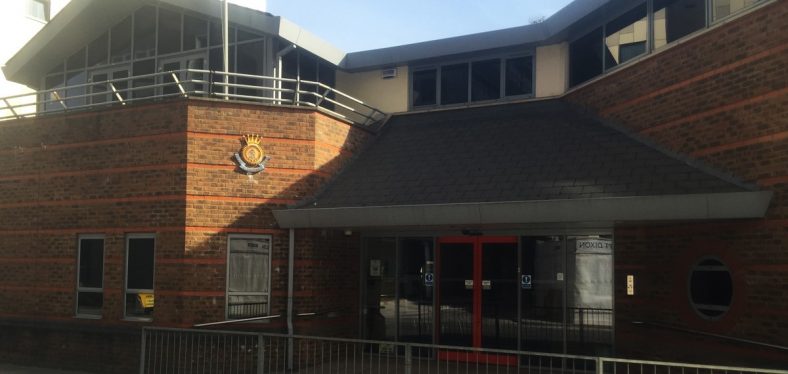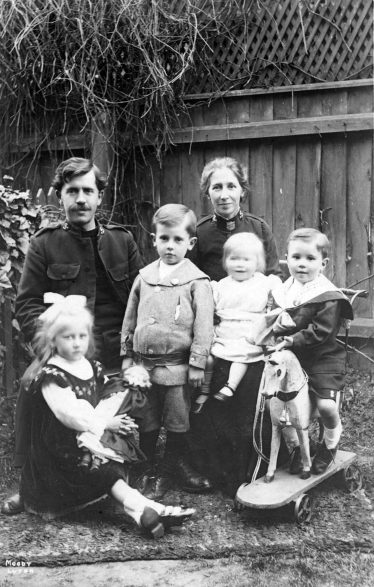Salvation Army first established in Luton in 1880s, after a successful “Pleasant Sunday Afternoon”, that offered people alternative forms of relaxation rather than spending time in public houses. From leading various campaigns against drink-related crimes, to sustaining the local population during the two World Wars, the organisation kept growing, being able to facilitate their service to the community.
A successful campaign
It was not until 1870 that Lutonians started to get a supply of unpolluted water. Before that, the only germ-free cold drinks available for adults and children were ales and spirits. It is little wonder that virtually every street corner had a public house (1 for every 48 inhabitants over the age of thirteen) and that drink-related crime was a serious and increasing problem.
In 1880 a number of Luton businessmen, having heard about The Salvation Army and their remarkable results in London’s East End, decided to organise a “Pleasant Sunday Afternoon” campaign to offer people alternative forms of refuge and relaxation. The leader of The Salvation Army, General William Booth, was asked if some of his “soldiers” could help with their campaign. In December 1882 Booth appointed Captain Jim Harris to “Open Fire” in Luton.
So successful was that first meeting in the Plait Hall in Cheapside that William Booth decided to establish a base (or corps) in Luton. Ironically, they moved into premises that had once been a brewery!
First establishments
A second corps was established 6 months later which initially held meetings in the Alexandra Theatre and then, later, in premises in Manchester Street. Luton’s temperance leaders were pleased with their new colleagues’ success, but there were others who were appalled by the Army’s abrasive tactics. Every soul “won for Christ” by the Army was a customer lost to the licensing trade. Publicans were soon up in arms and formed their own opposing army. The wide-brimmed bonnets worn by the ladies became useful shields against the rotten tomatoes, dead cats and other refuse thrown at them during open air services held in Luton’s streets.
In 1886, a purpose-built Army Temple was constructed on marshy ground by Blackwater Lane (now Lea Road) – it’s very name a reminder of the cholera and other deadly epidemics that were once rife. When the new building was opened by the Army Mother Mrs Catherine Booth a newspaper report described it as having:
an attractive appearance. It has a spacious gallery extending round three sides of the building, and tiers of raised seats ascending from the platform. The front of the building has three entrances, the principal of which is a turreted hall.
The Salvation Army in Luton: a growing community
The Salvation Army in Luton prospered despite counter attractions like the Grand Theatre (opened 1898), Luton’s first cinema (opened 1909) and the Palace Theatre (opened 1912). By the end of WWI the Temple corps had 400 senior members and 300 juniors. The Citadel corps in Manchester Street was equally strong.
1919 saw one of the darkest moments in Luton’s history, when soldiers returning from the war rioted and burned down the Town Hall, angry at not finding the employment they had been promised. Fortunately, their opinion of the Salvation Army was rather different, and they helped to save the neighbouring Citadel when it looked as if it might be engulfed by the flames. 17 years later, with the building of a new, larger, Town Hall, The Salvation Army had to leave their Manchester Street premises and move into a new purpose-built hall in nearby Alma Street. This was a boom time for the Temple Corps in Park Street, as evidenced by the opening of a third corps in Sarum Road in Leagrave.
These premises still serve as an outpost today. Many returning soldiers at the end of WWII were full of appreciation for the way The Salvation Army had supported them.
Red Shield canteens and Army cups of tea became the proverbial. At this time the Temple was closed for modifications that included the installation of iron girders to reinforce roof and foundations that had been shaken by passing tanks from the Vauxhall munitions factory.
By June 1999, the Citadel and the Temple decided to amalgamate in order to develop a new strategy for 21st century Luton and to build new premises that were better able to facilitate their service to the community. The new Worship & Community Centre, built on the site of the old Temple, was opened by Commissioner Keith Banks in April 2003.










No Comments
Add a comment about this page